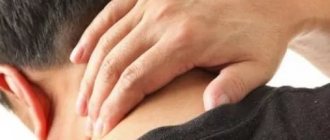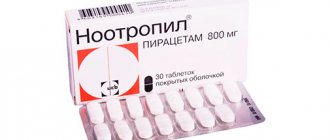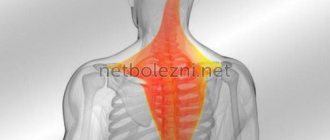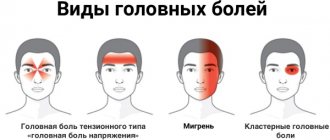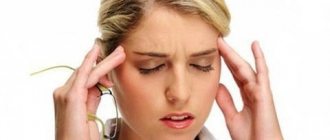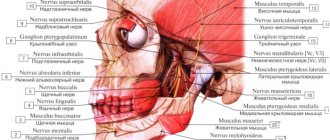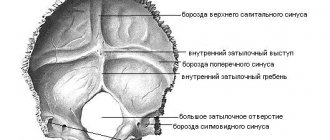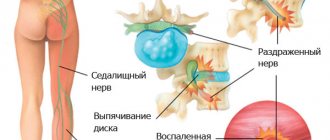A periodically occurring burning sensation in the back of the head is a serious symptom of many diseases associated with damage to cerebral blood vessels and nerve fibers. You can only get rid of a burning sensation in the back of the head with a correctly established diagnosis and effective treatment. Therefore, it is important, when such a clinical sign appears, not to engage in self-diagnosis, but to consult a neurologist.
You can make an appointment for a free appointment with this specialist at our manual therapy clinic. During the consultation, which lasts 30 minutes, the doctor will conduct an examination, make a preliminary diagnosis and give all the necessary recommendations for treatment.
Causes of burning in the back of the head
Common causes of a burning sensation in the back of the head lie in the degeneration of the cartilaginous intervertebral discs in the cervical spine. Osteochondrosis with a long course without appropriate treatment leads to the following:
- the intervertebral disc becomes thinner and loses its shock-absorbing ability;
- the radicular nerve is pinched and subjected to mechanical compression;
- the process of inflammation begins, spreading along the branches of the occipital nerve;
- increased skin sensitivity in the scalp area;
- hyperesthesia turns into a feeling of burning and pain.
The most common complication of this pathological condition is trigeminal and facial neuralgia. These diseases lead to the constant presence of severe pain attacks, which sometimes reach such intensity that the patient begins to think about suicide. It all starts with a burning sensation in the back of the head and upper neck.
Other causes of burning in the back of the head are no less dangerous to human health. This may be a deformation of the uncovertebral and facet joints, causing the neck to lose its flexibility and mobility. In this case, the ligaments, tendons and muscles surrounding the vertebrae become inflamed.
It is best to look for the reasons why the back of the head burns with the help of an experienced specialist, since already during the initial examination the doctor will be able to see characteristic changes. When palpating the spinous processes, deformations and displacements can be detected. Bone growths on the first and second vertebrae lead to disruption of the position and patency of the cerebral blood vessels. Vertebral artery syndrome may develop.
With this pathology, the reasons that the back of the head burns lie in changes in hemodynamics and blood supply to the posterior parts of the brain:
- when the cerebral blood vessels narrow, the posterior structures of the brain experience an acute deficiency of oxygen and glucose;
- a reflex narrowing of small blood vessels begins;
- secondary trophic damage to small nerve endings occurs;
- when the narrowing of cerebral blood vessels is eliminated (for example, when the position of the head is changed), active blood flow begins to the posterior structures of the brain;
- this provokes the occurrence of an acute burning sensation in the back of the head.
If the back of the head burns, the causes should be sought in the pathology of the cervical spine, cerebral blood vessels or innervation of the scalp. It is also important to exclude arterial hypertension, dislocation of the brain stem, traumatic effects and clinical manifestations of acute cerebrovascular accident.
Causes of throbbing pain in the back of the head
The feeling that the back of the head is throbbing from a headache indicates damage to the nerves or blood vessels, their inflammation or mechanical compression. Based on the intensity and nature of the painful sensations, we can tentatively assume their cause:
- acute, throbbing pain in the back of the head, which spreads to the entire surface of the head - infectious diseases, including influenza, meningitis, encephalitis;
- sharp pain in the form of repeated attacks is a manifestation of cervical migraine;
- unilateral or symmetrical pain in the back of the head, which causes numbness in the hands - damage to the occipital nerve;
- dull, aching pain – ischemia, insufficient blood supply to the occipital region.
If throbbing pain in the back of the head is accompanied by numbness in the hands, impaired hearing, vision or speech, or coordination of movements, it is important to exclude the possibility of a stroke. You should consult a doctor within the first 2 hours after an attack - it is during this period that medical care is most effective.
Vascular diseases
Pulsation in the back of the head is one of the manifestations of acute and chronic diseases of the vascular system. Important arteries that carry blood to the brain may be compressed from the outside or blocked from the inside. These processes, as well as infectious diseases, are accompanied by inflammation, pain, and insufficient blood supply to certain areas. These include:
- atherosclerosis is a chronic metabolic pathology in which the products of fat metabolism are deposited on the inner wall of the arteries and cholesterol plaques are formed;
- vasculitis - inflammation of blood vessels caused by injuries, compression of arteries or veins, as well as infectious processes;
- Vascular dystonia is a complex disorder that is accompanied by frequent surges in pressure and insufficient blood supply to the head and lower extremities.
For various vascular diseases, it is important to restore normal blood flow in the head, neck and back of the head. For this, medications, exercises, and physiotherapy sessions are prescribed. If acute or chronic vascular diseases are suspected, an ultrasound examination with a contrast agent is performed.
Diseases of the cervical spine
Throbbing pain in the back of the head can be a sign of acute or chronic neck diseases. They cause compression or spasm of the vertebral artery, which is important for cerebral circulation. As a result, the patient experiences acute, throbbing pain in the back of the head, dizziness, nausea, hearing and vision impairment. Symptoms disappear after a course of treatment, which eliminates the underlying cause of the pain.
As a result of diagnostics, the following violations may be detected:
- osteochondrosis is a chronic disease of the joints of the spine, which leads to thinning of the cartilage discs and deformation of the vertebrae;
- displacements and subluxations of the vertebrae - a violation of the anatomically correct placement of segments of the spinal column, which causes compression of the vessels and roots of the spinal nerves;
- protrusion of intervertebral discs - protrusion of cartilage in any direction, which is accompanied by acute pain in the neck and back of the head, as well as limited mobility;
- spondylosis is the fusion of two or more adjacent vertebrae as a result of trauma, surgery, or chronic deforming processes.
Cervical migraine is a disease that often progresses. It can worsen when weather or climate conditions change, or due to stress or physical exertion. The condition can be normalized with painkillers and antispasmodics, and the doctor can also prescribe muscle relaxants.
High blood pressure
Hypertension is considered a disease of older people, but in reality it can occur at any age. Increased stress, weakness of the vascular walls, excess weight and poor diet, as well as cardiac dysfunction are the main causes of this disease. Hypertension is considered to be an increase in blood pressure to levels greater than 120∕80 mm. rt. Art.
High blood pressure can be identified by the following symptoms:
- throbbing pain in the head, in the occipital region;
- dizziness, with a sharp increase in pressure, fainting is possible;
- redness of the facial skin, burning sensation, tingling, numbness;
- deterioration of hearing and vision, the appearance of dark circles before the eyes.
Doctors at the Clinical Institute of the Brain recommend having a tonometer in your home medicine cabinet, even if you have not previously experienced problems with high or low blood pressure. It is important to know your own normal indicators in order to notice the onset of an attack in time. They should be measured at rest - after physical activity and stress, pressure normally increases.
Neuralgia
Throbbing pain in the back of the head is one of the first signs of occipital neuralgia. It originates from the second cervical vertebra, passes through the muscles of the neck, under the base of the skull and goes to the scalp. Neuralgia refers to painful sensations that occur due to inflammation or mechanical compression of a nerve. The pain is acute, throbbing, lasts from several hours to several days, disappears after taking analgesics. Its causes may be:
- cervical spine injuries are the most common cause;
- degenerative diseases of the first two cervical vertebrae;
- arthritis – inflammatory diseases of the joints;
- neoplasms that compress the nerve.
Occipital neuralgia can occur in the absence of any congenital anomalies or chronic diseases. Its development is facilitated by incorrect posture, prolonged sitting, stress and other factors. One common cause is a spasm of the neck muscles, in which the nerve is compressed as it passes through this area.
Other reasons
If pain in the back of the head throbs frequently, this should be a reason for a full examination. During diagnosis, various disorders may be detected that require timely treatment:
- neoplasms located in the back of the head;
- diseases of the muscles of the back of the neck;
- increased intracranial pressure;
- migraine.
Headache is not the only symptom that indicates diseases of the heart and blood vessels, nervous system, neck and spine. It may be accompanied by nausea, deterioration of memory and attention, numbness of the hands and fingers, and sleep disorders.
Why does the back of the head and neck burn?
Problems with a burning sensation in the back of the head are often associated with diseases of the cervical spine. Increased sensitivity of the skin provokes increased local capillary circulation. This leads to the fact that a person feels that the back of his head is burning, and additional unpleasant sensations may arise.
If the burning sensation is accompanied by the following symptoms:
- dizziness and severe muscle weakness;
- feeling of lack of air when taking a deep breath;
- nausea and vomiting;
- muscle cramps;
- weakness in arms and legs;
- Strong headache,
then you should immediately call an ambulance team. This condition can be triggered by a sharp increase in blood pressure and, as a consequence, the threat of ischemic or hemorrhagic cerebrovascular accident.
If the back of the head and neck burn strongly, then it is necessary to rule out, first of all, compression of the radicular nerves. Usually this condition accompanies long-term cervical osteochondrosis. Patients experience regular pain in the neck and collar area. There may be tingling in the upper extremities, weakening of muscle strength, etc. A sudden burning sensation may indicate that disc protrusion has developed to such an extent that compression of the radicular nerve responsible for the innervation of the occipital part of the head has occurred.
Only an experienced vertebrologist or neurologist can answer the question of why the back of the head burns and how to cope with this negative symptom. In our manual therapy clinic you can get a free initial consultation with a vertebrologist and neurologist. To do this, just call us and make an appointment at a time convenient for you.
Where does the stabbing pain in the head come from - reasons
“What is this, like a needle piercing your head? I have a stabbing pain in my head,” these are the complaints doctors hear from patients. It is worth noting that the lion's share of this pathology is occupied by a specific reaction to external stimuli of the tissues of the skull.
The muscles spasm, then relax, tense, cool, etc. All this contributes to the appearance of tingling sensations, and the severity of symptoms can be very diverse. In most cases, these complaints are described as cephalalgia.
For example, even elastic bands and bows on the head often cause tingling in the head. After removing all the jewelry from the head, the relief and pain quickly disappear.
Most often, external factors that cause cephalalgia are harmless. But such systematic loads lead to persistent disorders in the tissues, which means that a disease may subsequently develop.
Other causes of tingling in the head include:
- VSD (vegetative-vascular dystonia);
- overwork (fatigue);
- migraine (“half head”);
- osteochondrosis of the spine (usually the cervical region is affected);
- occipital neuralgia (cervicogenic pain);
- ophthalmological pathologies;
- other.
How to treat a burning sensation in the back of the head and neck
Before treating a burning sensation in the back of the head and neck, you need to establish an accurate diagnosis. It is important to understand that this is just a symptom of trouble. A clinical sign may indicate the development of the disease. By curing the disease, we relieve the symptom.
Unfortunately, in most cases, doctors in official medicine try to stop the symptom without eliminating the cause of its occurrence. As a result, patients lose precious time, during which they could completely get rid of their illness without spending a huge amount of effort, money and time on it. Instead, patients receive symptomatic treatment that quickly returns them to work and causes the intervertebral discs to deteriorate at double the rate.
What needs to be done in order to identify the cause of the burning sensation in the back of the head and eliminate it effectively, and most importantly, safely. We offer a few simple tips that, if followed, will significantly improve the quality of your life:
- do not diagnose yourself, since your assessment will be subjective - contact an experienced doctor, especially since in our manual therapy clinic you can do this for free;
- do not use painkillers on a regular basis - they destroy bone marrow cells responsible for hematopoiesis, increasing the risk of developing leukemia;
- instead of painkillers, use the technique of traction of the spinal column - this will quickly relieve pressure from the radicular nerve and you will again feel freedom of movement without burning and pain in the back, neck and back of the head;
- devote at least 15 minutes daily to special exercises for the muscles of the neck and collar area - this will help restore damaged intervertebral discs, since their cartilage tissue can only receive fluid and nutrients during muscle work;
- drink as much clean drinking water as possible per day (at least 2 liters for an average-sized adult);
- treat osteochondrosis using the most effective methods, this will eliminate the development of dangerous complications of the disease.
If you periodically experience pain in the neck and collar area, or a burning sensation in the back of the head, then you need to consult a doctor as soon as possible and conduct a series of examinations. It is advisable to take an x-ray of the cervical spine. Please note that X-rays need to be taken in several projections to identify possible antelisthesis and retrolisthesis - these two types of displacement often occur in the neck area. Due to the displacement of the vertebral body, the surrounding nerve tissues are compressed and a strong burning sensation occurs in the back of the head. Therefore, it is important to take pictures in dynamics and from different projections.
How to eliminate the burning sensation in the back of the head?
There are various ways to eliminate a burning sensation in the back of the head, and the most common among them is taking painkillers. Their pharmacological action is based on the fact that factors in the development of the inflammatory response are blocked. Due to this, swelling of the soft tissues is eliminated and the nerve fiber is released from compression. The patient experiences a fairly quick but short-term effect.
Among the more effective and long-term treatment methods include manual therapy. It is capable of starting the process of complete restoration of damaged tissues of the human musculoskeletal system. And at the same time, you will not need to take absolutely any pharmacological drugs, which eliminates the risk of harm to health.
If a burning sensation in the back of the head is a sign of osteochondrosis and accompanying complications, such as disc protrusion, hernia, vertebral artery syndrome, then the following manual therapy techniques can be used:
- traction traction of the spine – provides an opportunity to straighten the cartilage tissue of the intervertebral disc and eliminate compression of the radicular nerve;
- massage and osteopathy, enhancing the processes of microcirculation of blood and lymphatic fluid in the lesion;
- reflexology, which triggers the process of regeneration of pathologically altered tissues;
- kinesitherapy and therapeutic exercises aimed at improving the functioning of the muscular frame of the neck.
The course of treatment is developed individually. We invite you to a free initial consultation. The doctor will conduct an examination, make a diagnosis and tell you about all the treatment options for the disease you have identified.
